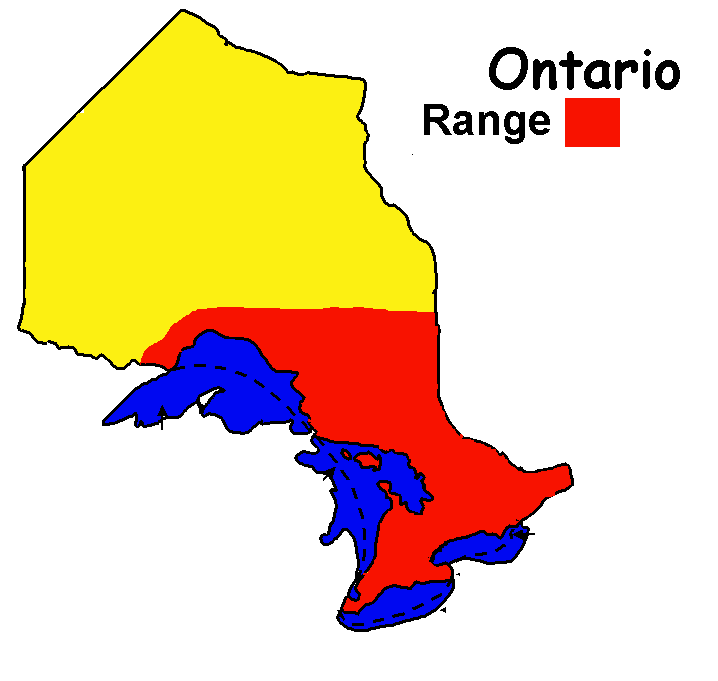Salamanders
Spotted Salamander
 Ambystoma maculatum
Ambystoma maculatum - A large, 15-18 cm salamander.
- Adults are easily identified by the yellow/orange spots scattered over its body. Its background color is black with a grey underside.
- However, juveniles look like most mole salamanders and their spots don't usually appear until after they have left the breeding ponds.

- Adult spotted salamanders usually live in underground tunnels throughout the summer. Hence, they are often referred to as "mole salamanders". They are usually encountered around breeding ponds, and under logs, stumps, and rocks in the spring and fall. They breed in temporary and permanent woodland pools.
- Spotted salamanders move to breeding ponds during the first warm spring rains in March and early April. Males arrive at the pond a few days before the females. As each female arrives at the pond she is intercepted by the waiting males.
- The female lays about 150 eggs, often in small groups of twenty to thirty, attaching them to submerged twigs and stems of plants in shallow water.
- After hatching, the larvae hunt daphnia, insect larvae, snails, tadpoles, and each other.
- The young salamander leave drying ponds along low-lying seepage areas and remain well hidden during the summer, emerging only on rainy evenings to feed on worms, beetle larvae, and small insects.
- There is some indication that acid rain may cause developmental problems if the pH is less than 6.0. Unfortunately, this salamander prefers temporary pools which are often fed by acidic meltwater and rainwater.
